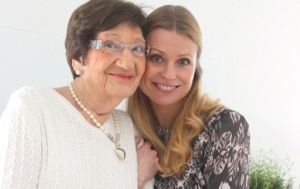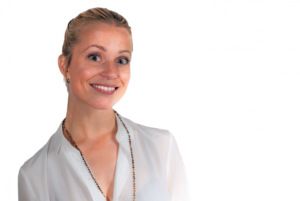Opinion
Fashion Jam: You’re never out of fashion!
Jenny Egsten-Ericson
This article is more than 9 years old.

Jenny’s grandmother is still style-conscious at 90 – an example to us all
At the time of writing this, my grandmother is due to turn 90 in three days, and even though we are 52 years apart, I think she cares just as much as me about her appearance and what she is wearing. And since she doesn’t live in England, she has no idea that you should desire to look like the queen after a certain age.
A life in fashion
The typical women’s magazine articles that offer tips to women on ‘dressing their age’ all tend to follow the same line.
In your 20s, you’re assured you can pull off almost anything. They tell you to start investing in statement bags and shoes early, but not to sweat any particular look too much – teens and twenty-somethings, you are young and invincible.
But oh, the 30s. Things start to get a little more serious. You get the big promotion and/or have a child and/or achieve your first brushes with power and success. Time to put the fake leather leggings away, time to invest in real ones from Helmut Lang. Time to start thinking about installing Dr Scholl’s in your high-heeled boots (but still wear them, the magazines say – heaven forbid you get over heels before 50).
Then come the 40s – I’m dangerously close and it’s apparently going to be very expensive. Think more cashmere, more leather goods and more luxury.
Then the 50s: you turn a corner. You should be wearing all designer clothes by now, say these articles, but nothing too flashy. Stick with tailored suits and demure blazers (in other words boring).
But in your 60s, should you make it that far, it seems like you finally get to start having fun again. The same rules seem to apply to the 70s, 80s and 90s – it turns out magazines don’t really acknowledge women over 60. They all seem to say: we don’t really care about you!
Trust the inner compass
Women very often say they are too old to wear this or that. But isn’t it discomfort, rather than a mismatch of age and outfit, which is truly the basis for all fashion mistakes?
I love it when I see a woman beyond the magazine’s age-appropriate remit, or any age for that matter, who makes an effort and feels comfortable, regardless of what the look is.
Style has never been about obeying fashion rules, but listening to your inner compass about where your creativity should go – where you should put your focus.
Truly worth it
When these articles tell a woman what is and is not suitable for a lady and her age, it is a way of both policing individual choices and creating new mass objects of desire that can be marketed and sold.
As women get older, and have more disposable income, the industry would benefit from telling them they need to buy more and more expensive goods to look young and true unto themselves.
Giving yourself the permission to don whatever you desire will keep you excited to wake up the next day and do it all over again; when you turn your closet into a playground, you are prolonging your own life. And nothing is more age-appropriate than that.

About
Jenny Egsten-Ericson
As a Swede who spent eleven years in London and New York, coming to Denmark four years ago had its ups and downs. Having worked in fashion most of her professional life, Jenny (@jennyfashjam) will be giving her opinion on our dress sense: the right choices and the bad ones.










































